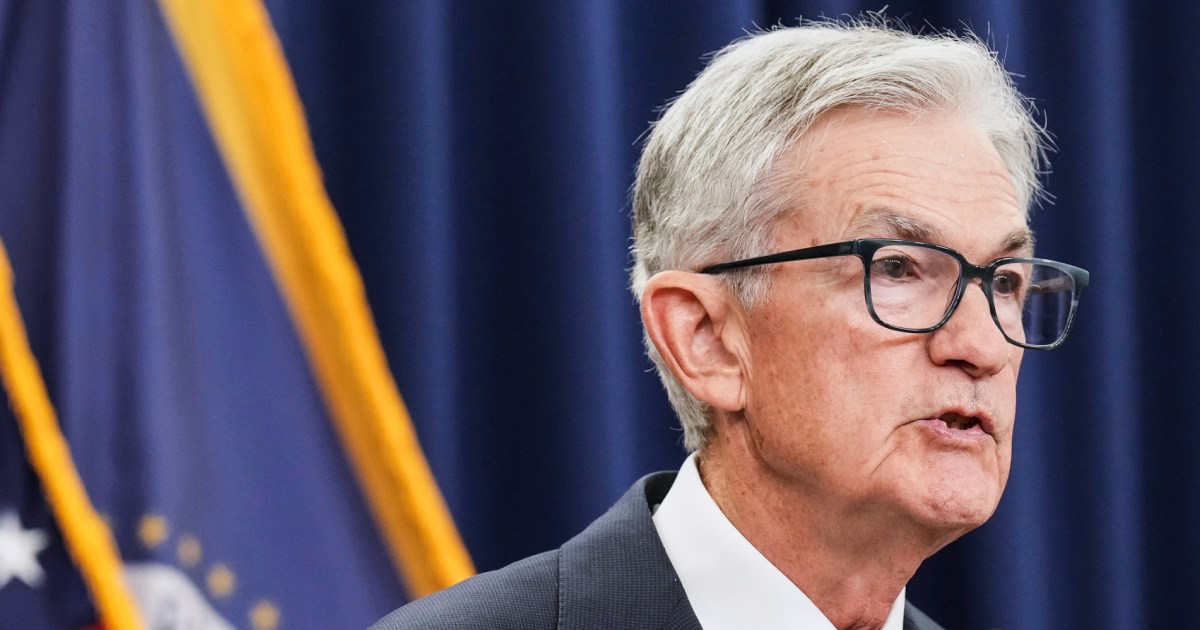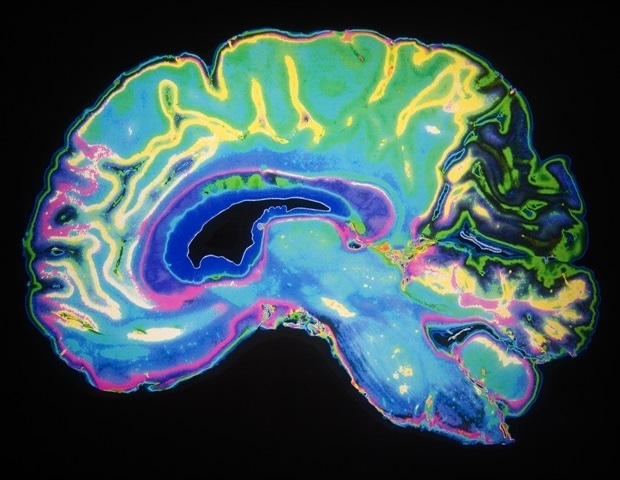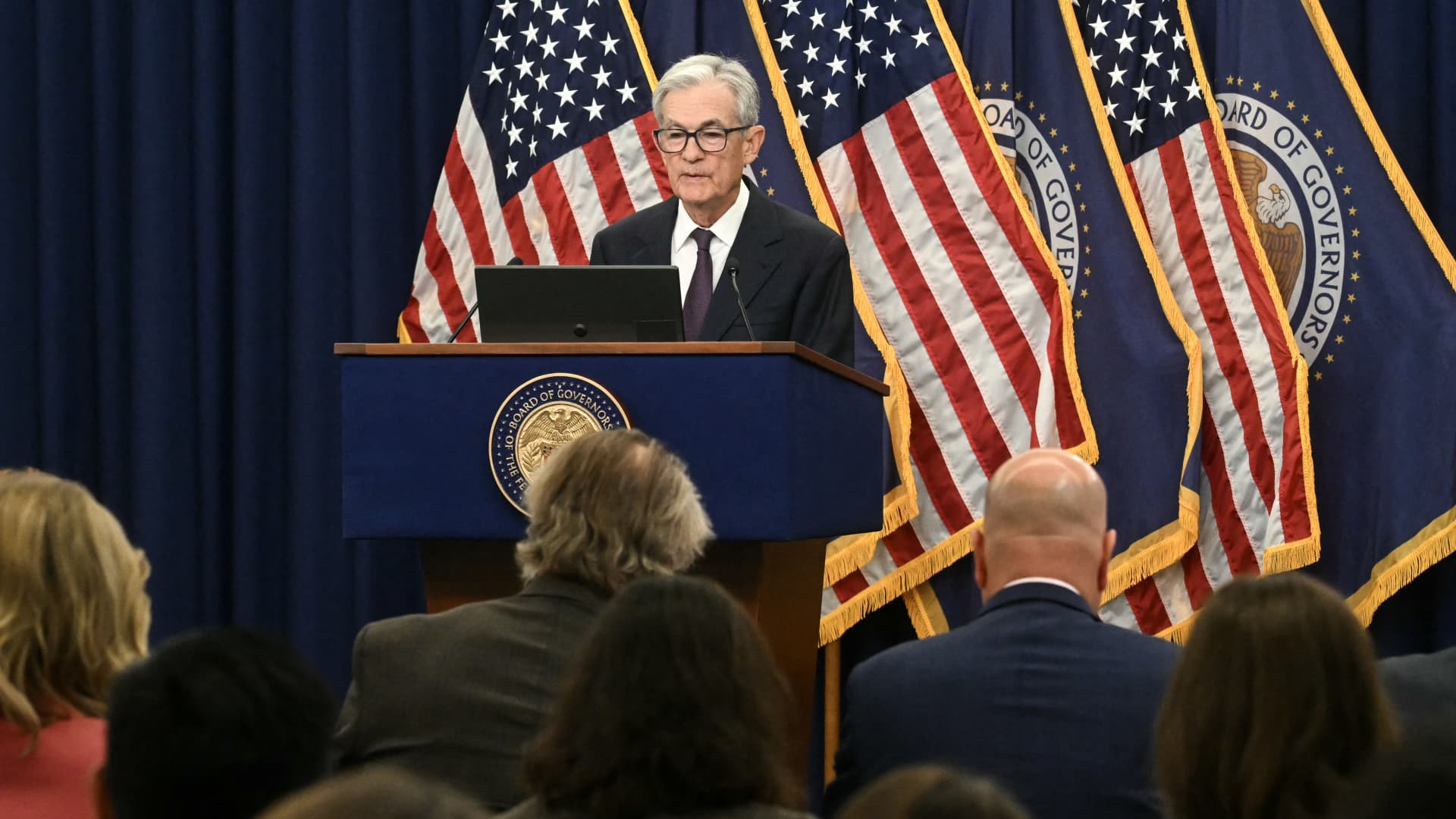A research team from the Nanjing Institute of Geology and Palaeontology of the Chinese Academy of Sciences (NIGPAS) has made progress in studying the Shibantan Biota in Yichang, Hubei Province, uncovering the oldest known complex…
Blog
-

Federal Reserve cuts key interest rate for the second time this year
The Federal Reserve on Wednesday cut its benchmark interest rate by a quarter-point for the second time this year, a move that could bring financial relief to consumers and businesses — but also carries risk as inflation ticks up.
In its statement accompanying the rate-cut announcement, the central bank said that although economic activity has been expanding, jobs growth had slowed while inflation had increased.
Fed Chair Jerome Powell is scheduled to discuss the decision at a 2:30 p.m. ET press conference.
The central bank’s action is designed to reduce the cost of borrowing throughout the economy. A lower rate tends to have immediate effects on auto loans and credit cards. Mortgage rates are not directly tied to the Fed’s benchmark rate, but they can move in parallel.
It comes as the U.S. economy grapples with a slowing labor market and stubborn price growth.
Several major companies have announced thousands of job cuts this year while many government workers remain furloughed due to the shutdown. Price growth in September ticked up to its highest point since January, according to federal data.
Despite all of that uncertainty, stock markets have rocketed to record highs, fueled in large part by an artificial intelligence investment boom. Chipmaker Nvidia on Wednesday became the first company to be valued at $5 trillion on the stock market.
What happens next in the economy is anyone’s guess. The Fed’s next rate decision is scheduled for Dec. 10.
Typically, in times of a labor market slowdown the Fed lowers rates to spur economic activity. During times of rising inflation, the Fed often hikes rates to put a lid on rising prices.
With data simultaneously showing a weakening employment picture and a stubborn price growth, the Fed faces a dilemma.
“There is no risk-free path for policy as we navigate the tension between our employment and inflation goals,” Powell said earlier this month. He made similar remarks when the Fed cut rates for the first time this year, in September.
Lower interest rates can sometimes worsen inflation by increasing overall economic activity.
Last week, the Bureau of Labor Statistics reported that the annual inflation rate for consumer prices had climbed from 2.9% to 3% in September — well above the Fed’s 2% target. The Fed’s view of the economy remains impaired by a lack of other data, which is paused due to the government shutdown. One of those measures, the personal consumption expenditures index (PCE), is the Fed’s preferred inflation gauge. The August PCE report, published prior to the shutdown, also showed a reading north of the 2% goal.
Many economists attribute a significant portion of ongoing price pressures to President Donald Trump’s tariffs.
“The tariffs are the biggest tax increase since the late 1960s,” said Luke Tilley, chief economist at Wilmington Trust financial group.
Meanwhile, jobs data suggests the U.S. is experiencing one of the weakest labor markets of the 21st century. The unemployment rate, at 4.3% as of August, is relatively low on a historical basis. But it is taking those without jobs an average of nearly six months to land a new position, as hiring rates have collapsed to levels last seen in the years following the 2008 global financial crisis. The government shutdown, now on the verge of its fourth week, has complicated matters by preventing the Bureau of Labor Statistics from releasing more current economic data.
Without fresh numbers, “the Fed’s task is further complicated,” BNP Paribas economists wrote in a note on Tuesday. There are few private-sector sources of data and none can fully replicate the official government data. For instance, payroll processor ADP released its employment survey, which pointed to a significant decline in private employment in August and September. But that data only covers about 20% of the private labor force and does not count federal, state or local government employment.
Part of the problem is that economic growth appears to be powering ahead thanks in great part to investments in artificial intelligence.
Estimates of gross domestic product, the standard measure of economic growth, have soared to nearly 4%. Major stock market indexes, meanwhile, continue to set new records — also largely as a result of AI investments, fueling concerns about a bubble. The mere expectation that the Fed will further lower interest rates has also historically led to support for stock prices. Stocks were moderately higher after the announcement Wednesday.
“Something’s gotta give,” Fed governor Christopher Waller said on Oct. 16. Waller, a Trump nominee who is a finalist to succeed Powell as chair, has a permanent vote on the Fed’s rate-setting committee. “Either economic growth softens to match a soft labor market, or the labor market rebounds to match stronger economic growth,” he added.
But even Waller, who in the summer called on the Fed to lower rates as soon as possible, urged caution: “We need to move with care when adjusting the policy rate to ensure we don’t make a mistake that will be costly to correct.”
Other analysts believe that the tension between elevated inflation and weakening labor data is easing — though for reasons that do not bode well for the broader economy. In a note published Monday, Neil Dutta, head of economics at Renaissance Macro research group, said that as jobs growth continues to falter, price pressures will, too, as households grow more cautious about spending.
“Labor market slack continues to build and there is reason to expect inflation to cool as a result,” Dutta wrote.
Continue Reading
-

Fruit flies illuminate the role of Alzheimer’s disease risk genes
Scientists have identified hundreds of genes that may increase the risk of developing Alzheimer’s disease but the roles these genes play in the brain are poorly understood. This lack of understanding poses a barrier to developing…
Continue Reading
-

Keep Your Home Safe During Holiday Travels With Up to 60% Off Blink Outdoor 4 Cams
With the holidays coming up, many of us will be on the road, visiting with friends and family. Whether you’re away for one day or one week, it’s important to keep your home protected. Getting a home security camera is a great way to make sure…
Continue Reading
-
Survival of the blandest: Unusual sharks face highest extinction risk
If current extinction trends continue, global shark populations will lose much of their variety, thereby threatening ecosystems where specialized species serve vital roles, researchers have found.
In…
Continue Reading
-

Footballer’s skull fractured by spectators at match in Liverpool
An amateur footballer and NHS worker has been left with a fractured skull after being attacked by a group of “more than 10 spectators” during a match in Liverpool.
Ormskirk West End Football Club said one of their players, Richard Agbasoga, was…
Continue Reading
-

Charlotte Edwards says England job ‘not a quick fix’ after World Cup exit
To look purely at the scorecard, England were thumped by South Africa.
They were made to rue electing to bowl, with the Proteas, led by Laura Wolvaardt’s superb 169, piling on 319-7.
It left England requiring their highest successful women’s ODI…
Continue Reading
-
Just a moment…
Just a moment… This request seems a bit unusual, so we need to confirm that you’re human. Please press and hold the button until it turns completely green. Thank you for your cooperation!
Continue Reading
-
Just a moment…
Just a moment… This request seems a bit unusual, so we need to confirm that you’re human. Please press and hold the button until it turns completely green. Thank you for your cooperation!
Continue Reading
-

Fed rate decision October 2025
The Federal Reserve on Wednesday approved its second straight interest rate cut, a widely expected move that came despite little recent visibility on the economy due to the government shutdown.
By a 10-2 vote, the central bank’s Federal Open Market Committee lowered its benchmark overnight borrowing rate to a range of 3.75%-4%. In addition to the rate move, the Fed announced that it would be ending the reduction of its asset purchases – a process known as quantitative tightening – on Dec 1.
Governor Stephen Miran again cast a dissenting vote, preferring the Fed move more quickly with a half-point cut. Kansas City Fed President Jeffrey Schmid joined Miran in dissenting but for the opposite reason – he preferred the Fed not cut at all.
The rate also sets a benchmark for a variety of consumer products such as auto loans, mortgages and credit cards. The reduction came even though the Fed essentially has been flying blind lately on economic data.
Other than the consumer price index release last week, the government has suspended all data collection and reports, meaning such key measures as nonfarm payrolls, retail sales and a plethora of other macro data is unavailable.
In the post-meeting statement, the committee acknowledged the uncertainty accompanying the lack of data, qualifying the way it categorized broad economic conditions.
“Available indicators suggest that economic activity has been expanding at a moderate pace. Job gains have slowed this year, and the unemployment rate has edged up but remained low through August; more recent indicators are consistent with these developments,” the statement said. “Inflation has moved up since earlier in the year and remains somewhat elevated.”
Each of those characterizations represented tweaks from the September statement. The most significant change was the view on broad economic activity. In September, the FOMC said activity had moderated.
The statement reiterated concerns that policymakers have over the labor market, saying that “downside risks to employment rose in recent months.”
Even before the shutdown, evidence had begun to build that while layoffs have been contained, the pace of hiring had flattened. At the same time, inflation has held considerably above the Fed’s 2% annual goal. The CPI report last week, released because of its importance to Social Security cost of living adjustments, showed the annual rate at 3%, pushed by higher energy costs as well as several items with direct or indirect links to President Donald Trump’s tariffs.
The Fed tries to strike a balance between full employment and stable prices. Officials lately, though, have said they see a slightly higher risk posed by the jobs picture. Along with the interest rate decision, the Fed said its process of reducing the amount of bonds it holds on the central bank’s $6.6 trillion balance sheet will end.
The program, also known as QT, had shaved some $2.3 trillion off the Fed’s portfolio of Treasurys and mortgage-backed securities. Instead of reinvesting maturing proceeds from the securities, the Fed has been allowing them to roll off the balance sheet at a limited level each month. However, recent signs of some tightening in short-term lending markets have raised concern that the roll-off has gone far enough.
An implementation note accompanying the decision indicated the Fed will be rolling proceeds from maturing securities into shorter-term bills, thus reducing the duration of its broader portfolio. Previously, the Fed had rolled the proceeds over into securities of the same maturities.
Markets recently had begun anticipating that the Fed would end QT either in October or by the end of the year. The Fed expanded its holdings during the Covid crisis, pushing the balance sheet from just over $4 trillion to close to $9 trillion. Powell has said that while the Fed found it necessary to shrink its holdings, he did not foresee a return to pre-pandemic levels.
In fact, Evercore ISI analyst Krishna Guha said he could foresee a scenario where the Fed actually restarts the purchases early in 2026 for “organic growth purposes” as market conditions shift. The Fed rarely eases monetary policy during economic expansions and bull markets in stocks. Major averages, though volatile, have been posting a series of record highs, boosted by further gains in Big Tech stocks and a robust earnings season.
History has shown that the market continues to rise when the Fed does cut under such circumstances. However, easier policy also poses the risk of higher inflation, a condition that forced the Fed into a series of aggressive rate cuts.
Continue Reading
